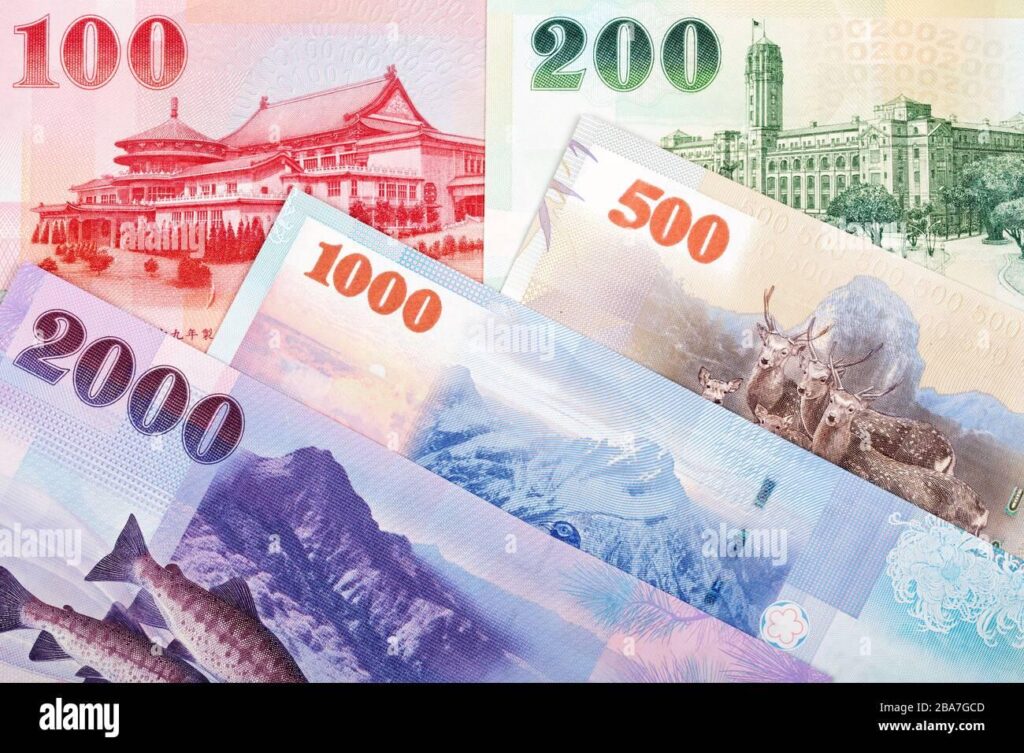New Taiwan Dollar Climbs Over 2% Amid Strong Economic Indicators
The New Taiwan Dollar (NTD) has recently surged by more than 2% against the US dollar, signaling renewed confidence in Taiwan’s economic strength and export vitality. This notable currency appreciation emerges amid volatile global financial markets and is widely interpreted as a sign of growing investor trust. Experts link this upward movement to a blend of solid economic data, heightened demand for Taiwanese exports, and deliberate monetary policy actions by Taiwan’s central bank. As market watchers analyze the implications of this trend, questions arise regarding its durability and the key drivers shaping its future path. This article delves into the factors behind the NTD’s rise and explores what it means for Taiwan’s economy going forward.
NTD Strengthens on Back of Economic Growth and Export Demand
The recent rally in the New Taiwan Dollar—gaining over 2% versus the US dollar—reflects an underlying robust economic environment that has attracted attention both within Taiwan and internationally. Several pivotal elements have fueled this currency appreciation:
- Robust Export Sector: The sustained high demand for Taiwanese technology products, particularly semiconductors, continues to drive export growth.
- Effective Inflation Management: Proactive measures by the Central Bank have helped maintain price stability, boosting investor confidence.
- Global Currency Movements: The relative weakening of the US dollar amid shifting macroeconomic indicators has also supported NTD gains.
This strengthening trend not only enhances consumer sentiment but also benefits local enterprises reliant on imports through improved exchange rates that reduce costs and increase profitability. To illustrate recent performance shifts in foreign exchange markets involving NTD, consider the following updated table:
| Currency | Exchange Rate (per unit) | % Change |
|---|---|---|
| USD | 30.50 NT$ | -2.10% |
| EUR | 33.20 NT$ | -1.45% |
| JPY (100 units) | 27.80 NT$ | -1.35% |
Key Drivers Behind NTD Appreciation: An Analyst Perspective
Market analysts are closely examining several critical factors underpinning this impressive surge in NTD value exceeding 2%. Chief among these are increased foreign investment inflows fueled by strong domestic fundamentals:
- Sustained GDP Expansion:Taiwan’s economy continues to outperform many regional peers with steady quarterly growth rates surpassing expectations.
- Booming Tech Exports:The semiconductor industry remains a powerhouse sector; rising global chip demand bolsters trade surpluses supporting currency strength.
- Cautious Monetary Policy Adjustments:The Central Bank’s calibrated interest rate hikes have enhanced yield attractiveness without stifling growth prospects.
- A Stable Political Climate:Taiwan’s geopolitical steadiness amidst regional tensions reassures international investors seeking safe-haven assets within Asia-Pacific markets.
Beyond domestic influences, external market dynamics play an essential role; fluctuations in USD valuation combined with evolving global capital flows significantly impact NTD pricing trends.
To contextualize these developments over recent months:
| Date | N.T.D Exchange Rate (USD per unit) | Description of Market Sentiment & Events |
|---|---|---|
|
Td
> 1 USD =30 .75 NT$ < /Td > Increased geopolitical concerns prompt safe-haven buying < /Tr > |
Strategic Investment Considerations Amid Currency Volatility
Given this pronounced appreciation exceeding two percent in a short span, financial advisors recommend investors revisit their portfolio allocations carefully to optimize returns while mitigating risks linked to currency fluctuations.
Understanding how shifts in exchange rates influence asset values is crucial when managing diversified holdings exposed across borders.
Investors should contemplate focusing on sectors likely to benefit from a stronger New Taiwan Dollar environment:
- Diversified Technology Firms:Their export-driven revenues stand poised for gains as competitive pricing strengthens abroad.
- Sectors Dependent on Imports or Foreign Inputs:A stronger local currency can reduce input costs improving margins.
- Currencies & Assets Abroad :An appreciating home currency may enhance purchasing power when acquiring overseas real estate or equities.
Below is an overview highlighting potential impacts across various investment categories:
| Investment Category | Expected Effect |
|---|---|
|
Technology Stocks | Likely positive due to robust exports |
| Consumer Goods | Potential margin pressure from import cost volatility |
| Foreign Real Estate Investments | More affordable acquisitions due to stronger home currency
Conclusion: Future Outlook for the New Taiwan Dollar In summary,the NewTaiwanDollar ’s remarkable climb beyond two percent reflects multifaceted influences ranging from internal economic vigorto external market forces.The ongoing monitoringof these variables will be vitalfor tradersand investors aimingto capitalizeon emerging opportunitieswhile navigatingpotential challengeswithinTaiwan ’seconomyandfinancialmarkets.Asglobal uncertainties persist,the abilityto adapt swiftlywill determine successinthisdynamiccurrency landscape.Further updatesare expectedas new data unfoldsregardingTaiwan ’sexport trajectoryandmonetarypolicy directions. |
